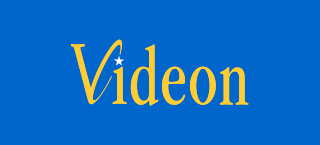CBC News Network is a Canadian English-language specialty news channel owned by the Canadian Broadcasting Corporation (CBC). It is Canada's first all-news channel, and the world's third-oldest television service of this nature
Simultaneous substitution is a practice mandated by the Canadian Radio-television and Telecommunications Commission (CRTC) requiring broadcast distribution undertakings (BDUs) in Canada to distribute the signal of a local or regional over-the-air station in place of the signal of a foreign or non-local television station, when the two stations are broadcasting identical programming simultaneously.

Bell Media Inc. is a Canadian media conglomerate that is the mass media subsidiary of BCE Inc.. Its operations include national television broadcasting and production, radio broadcasting, digital media and Internet properties.

CKXT-DT was a broadcast television station based in Toronto, Ontario, Canada, which broadcast to much of southern and eastern Ontario. It was owned by Quebecor Media through its Groupe TVA unit. Although beginning as a general interest independent station carrying a typical schedule of entertainment and information programming, by the time of the station's closure on November 1, 2011, the station had been converted into an over-the-air simulcast of Quebecor's cable news channel, Sun News Network. The station transmitted on channel 52 in Toronto.

Cartoon Network is a Canadian English-language discretionary specialty channel owned by Corus Entertainment. The channel primarily broadcasts animated series aimed at children and teenagers.

CTV Drama Channel is a Canadian English language discretionary specialty channel owned by Bell Media. The channel primarily broadcasts drama series and films.

Super Écran is a Canadian French-language premium television network owned by Bell Media. It airs a mix of commercial-free films and television series. Films are primarily sourced from the United States and Canada, while the television series mostly consist of original series and programs from HBO and Showtime in the United States.

Family Channel is a Canadian English-language specialty channel owned by DHX Television Inc., a subsidiary of WildBrain. The network primarily airs children's television series, teen dramas, as well as other programming targeting a family audience. Despite having its own headquarters in the Brookfield Place office in Financial District, the channel is transmitted from Corus Quay.
Crave is a Canadian premium television network and streaming service owned by the Bell Media subsidiary of BCE Inc.

Movie Central was a Canadian English language Category A premium cable and satellite television channel that was owned by Corus Entertainment. Movie Central was designated to operate west of the Ontario-Manitoba border, including the territories. Although the channel's name implies that it focuses solely on theatrically released motion pictures, Movie Central's programming included original and foreign television series, made-for-cable movies and documentaries.

Super Channel Entertainment Network is a Canadian English language premium cable and satellite television channel owned by Allarco Entertainment 2008 Inc. Super Channel's programming primarily includes theatrically released, first to television motion pictures and television series, along with documentaries and other niche programs.
Playmen TV is a Canadian English language specialty channel. It is a premium adult entertainment television channel aimed at gay men, with programming consisting mainly of adult films and adult-related television series. It originally launched in 2005 as a spin-off from PrideVision, leaving the channel to focus on lifestyle and entertainment programming serving the LGBT community.
The Life Channel was a Canadian premium television service featuring programming on lifestyle and health subjects, existing for almost 14 months in the late 1980s. The programming represented some of the earlier efforts of Canada's premium television industry, considering pay-TV movie channels had commenced in 1983. It should not be confused with later Canadian cable channels Life Network and CTV Life Channel.
CBC Parliamentary Television Network was a Canadian cable television specialty channel that broadcast the House of Commons of Canada proceedings via Anik satellite to Canadian cable television headends between September 1979 and 1992.
CBC Television 2 and Télé-2 were proposed second television services to be operated by the Canadian Broadcasting Corporation (CBC)/Société Radio-Canada (SRC). These were to have been the Canadian equivalents to BBC Two in the United Kingdom, itself the second television channel of the BBC.

Videon Cablesystems was a Canadian cable television service in Manitoba, Alberta, and for a short period, northwest Ontario. The company was owned by Moffat Communications Ltd. and Randall L. Moffat was its president.
Canada is served by various multichannel television services, including cable television systems, two direct-broadcast satellite providers, and various other wireline IPTV and wireless MMDS video providers.
TSN2 is a Canadian English-language discretionary sports specialty channel that acts as the secondary feed of sports-centred channel The Sports Network (TSN) and owned by CTV Specialty Television Inc. It was launched in its current form on August 29, 2008.
Encore Avenue was a Canadian English language Category A premium cable and satellite television channel that was owned by Corus Entertainment. Encore Avenue was designated to operate west of the Ontario-Manitoba border, including the territories. The channel offered a variety of classic films from the 1970s to the 1990s, with films from the early 2000s interspersed within the schedule.
A discretionary service is a Canadian specialty channel which, as defined by the Canadian Radio-television and Telecommunications Commission, may be carried optionally by all subscription television providers. It replaces the previous category A, category B, category C, and premium classifications.









